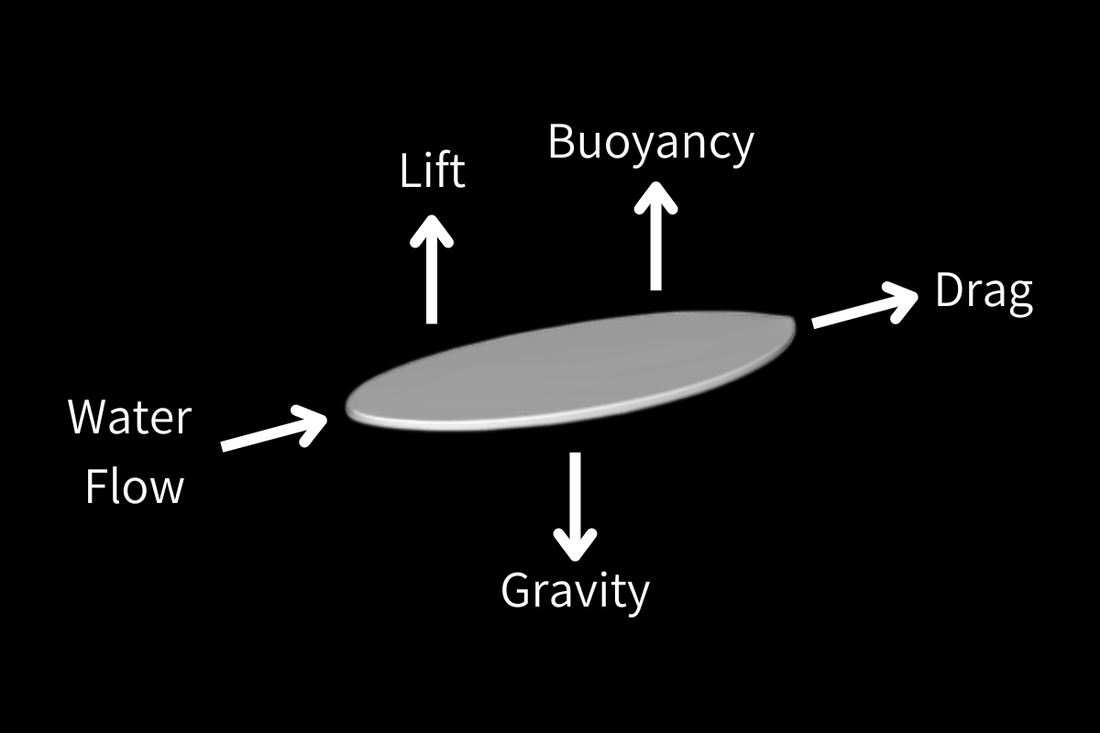
When Force is Fluid: Using Fluid Dynamics to Inform Wakesurf Board Design
Share
If you've ever tried a skim-style wakesurf board and then switched to surf-style, you’ve likely noticed that they feel and ride completely differently. It makes sense because the former is usually smaller and thinner, while the latter is larger, thicker, and has bigger fins. But why do these design differences change the ride? Is it that bigger boards have more contact with the water, while thinner boards have less volume and buoyancy? In short: yes, and no. To really get an understanding of why a specific wakesurf board style feels and rides differently, we need to understand what forces are acting on a board and how each of those forces influences the ride.
When it comes to surfing, there are 4 types of forces to consider:
- Buoyancy: the upward force of water “pushing”’ up on a submerged object
- Lift: the aerodynamic force that acts perpendicular to the water flow direction, and requires both movement and water flow to exist
- Drag: the force that opposes the forward motion of a board moving through the water
- Gravity: the force that pulls the board (and rider) straight down as they ride the face of the wave
We rely on the principles of fluid dynamics (the study of fluid in motion) to determine the values of the forces that act on a wakesurf board. Combining fluid dynamics, simulations, and real-world measurements helps us identify the various forces exerted on each point of the board and allows us to establish correlations between board features and the forces they generate. For instance: by measuring boards of different widths, we can better understand how width impacts lift and drag.
We use real world measurements to determine how fluid dynamics forces impact different performance metrics like speed or agility (What is Performance? – Smith Board Company). That allows us to tie the forces acting on the board to those different performance metrics so that we can determine how and to what degree different attributes of a board's design will influence the overall ride of the board.
The Process:
- Simulate and measure the forces at each point of the board
- Repeat step 1 for many boards with different attributes in order to determine how different aspects of board design affect the forces present on a board
- Take real world measurements of performance metrics for different boards and tie those to the forces from step 2
- Document how the simulation and real world results influence the performance
All of this allows us to design boards with a control and understanding that is currently unavailable in the wake surfing industry. By building this knowledge base, we can design boards that are measurably faster or more agile. If we want to improve a board's performance along a certain metric (Why does it matter that we define Performance? – Smith Board Company), we know exactly what attributes to tweak and how to tweak them in order to increase that metric while also limiting the negative effects on other metrics. This approach is what allows Smith Board Co to build wakesurf boards that are driving this sport forward.
